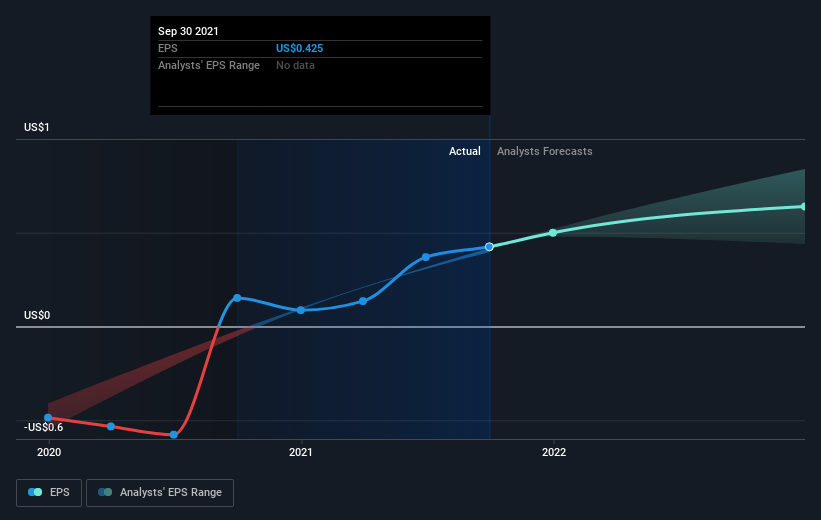The 51% return delivered to Alexander & Baldwin's (NYSE:ALEX) shareholders actually lagged YoY earnings growth
If you want to compound wealth in the stock market, you can do so by buying an index fund. But if you pick the right individual stocks, you could make more than that. To wit, the Alexander & Baldwin, Inc. (NYSE:ALEX) share price is 46% higher than it was a year ago, much better than the market return of around 19% (not including dividends) in the same period. That's a solid performance by our standards! It is also impressive that the stock is up 32% over three years, adding to the sense that it is a real winner.
The past week has proven to be lucrative for Alexander & Baldwin investors, so let's see if fundamentals drove the company's one-year performance.
Check out our latest analysis for Alexander & Baldwin
To quote Buffett, 'Ships will sail around the world but the Flat Earth Society will flourish. There will continue to be wide discrepancies between price and value in the marketplace...' One flawed but reasonable way to assess how sentiment around a company has changed is to compare the earnings per share (EPS) with the share price.
Alexander & Baldwin was able to grow EPS by 179% in the last twelve months. It's fair to say that the share price gain of 46% did not keep pace with the EPS growth. So it seems like the market has cooled on Alexander & Baldwin, despite the growth. Interesting. Having said that, the market is still optimistic, given the P/E ratio of 57.74.
You can see below how EPS has changed over time (discover the exact values by clicking on the image).
We know that Alexander & Baldwin has improved its bottom line lately, but is it going to grow revenue? You could check out this free report showing analyst revenue forecasts.
What About Dividends?
It is important to consider the total shareholder return, as well as the share price return, for any given stock. The TSR incorporates the value of any spin-offs or discounted capital raisings, along with any dividends, based on the assumption that the dividends are reinvested. It's fair to say that the TSR gives a more complete picture for stocks that pay a dividend. In the case of Alexander & Baldwin, it has a TSR of 51% for the last 1 year. That exceeds its share price return that we previously mentioned. And there's no prize for guessing that the dividend payments largely explain the divergence!
A Different Perspective
It's good to see that Alexander & Baldwin has rewarded shareholders with a total shareholder return of 51% in the last twelve months. Of course, that includes the dividend. Notably the five-year annualised TSR loss of 1.5% per year compares very unfavourably with the recent share price performance. The long term loss makes us cautious, but the short term TSR gain certainly hints at a brighter future. I find it very interesting to look at share price over the long term as a proxy for business performance. But to truly gain insight, we need to consider other information, too. Take risks, for example - Alexander & Baldwin has 3 warning signs (and 2 which are concerning) we think you should know about.
If you would prefer to check out another company -- one with potentially superior financials -- then do not miss this free list of companies that have proven they can grow earnings.
Please note, the market returns quoted in this article reflect the market weighted average returns of stocks that currently trade on US exchanges.
Have feedback on this article? Concerned about the content? Get in touch with us directly. Alternatively, email editorial-team (at) simplywallst.com.
This article by Simply Wall St is general in nature. We provide commentary based on historical data and analyst forecasts only using an unbiased methodology and our articles are not intended to be financial advice. It does not constitute a recommendation to buy or sell any stock, and does not take account of your objectives, or your financial situation. We aim to bring you long-term focused analysis driven by fundamental data. Note that our analysis may not factor in the latest price-sensitive company announcements or qualitative material. Simply Wall St has no position in any stocks mentioned.

